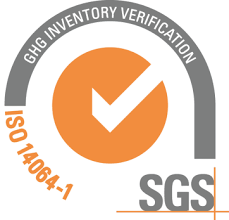Insulation
Functions of Motor Insulation
Motor insulation has two basic functions:
- It separates the various electrical components from one another.
- It protects itself and the electrical components from attack by contaminants and other destructive forces.
To best perform these functions, five specialized elements are used, which together constitute the Insulation System. The following are typical in an AC motor:
- Turn-to-Turn Insulation – A coil consists of a number of turns of round copper magnet wire. These turns of wire are insulated from each other using a 200ºC rated polyester enamel. (Usually enamel on random-wound coils of smaller motors – tape on “form-wound” coils of larger motors).
- Phase Insulation – The various coils in a motor are connected together in the three phases. The coils in one phase must be insulated from the coils in another phase. TECO-Westinghouse uses a sheet of either Dacron Glass Cloth or DMD (Dacron Mylar Dacron) between the coils of the different phases.
- Ground Insulation – The winding must be insulated from the stator iron in the motor. An insulation barrier (slot liner) of DMD (Dacron Mylar Dacron) is placed in the slot.
- Slot Wedges – The wedges are made of DMD and hold the conductors firmly in the slot.
- Varnish – The complete winding is given a non-hygroscopic polyester varnish immersion and oven cure to bond the above materials together as well as the individual turns in the coil. This gives a good protective seal against moisture and contaminants. All motors receive two immersions and oven cure cycles. The bake cycle is from 3 to 17 hours depending on the size.
Insulation Classes
The maximum allowable safe operating temperature occurring at the hottest spot within a motor is determined by:
- The temperature of the air surrounding the motor. This is the ambient temperature.
- The heat created within the motor due to its operation at a fully loaded condition. This is the temperature rise.
- The thermal capability of all the insulation materials used within the motor. For simplicity these materials have been broken into classes A, B, F and H.
These four classes have been standardized by NEMA. Most AC motors now use Class F insulation, but in the past, Class B has been the most common. IEEE (Institute of Electrical and Engineering and Electronics Engineers) definitions for these four classes are as follows:
- Class A: 105ºC – Materials like cotton, silk, and paper when suitably impregnated or coated, or when immersed in a dielectric liquid such as oil. Other materials may be included if they demonstrate capability up to 105ºC.
- Class B: 130ºC – Materials such as mica, glass fiber, polyesters, and aramid laminates with suitable bonding substances. Other materials may be included if they demonstrate capability up to 130ºC.
- Class F: 155ºC – Materials such as mica, glass fiber, polyesters, and aramid laminates with suitable bonding substances. All TECO-Westinghouse motors use Class F insulation as standard.
- Class H: 180ºC – Materials such as silicone elastomer, mica, glass fiber, polyesters, and aramid laminates with suitable bonding substances like silicone resins. Other materials may be included if they demonstrate capability up to 180ºC.

